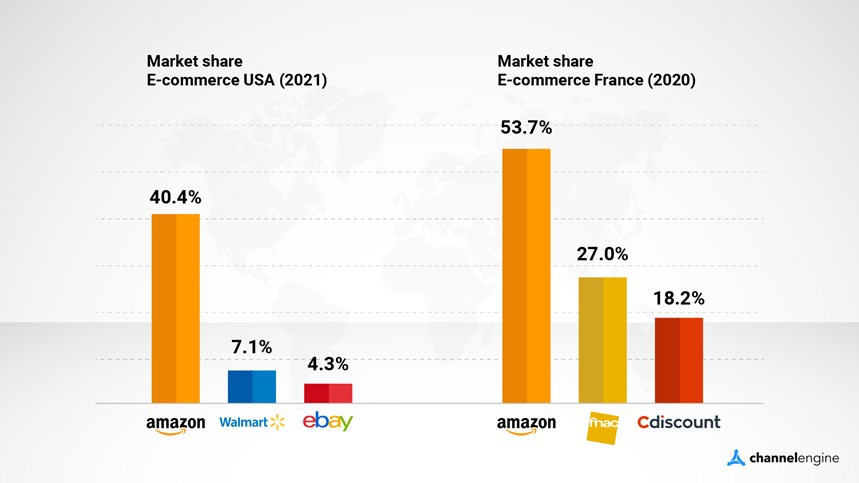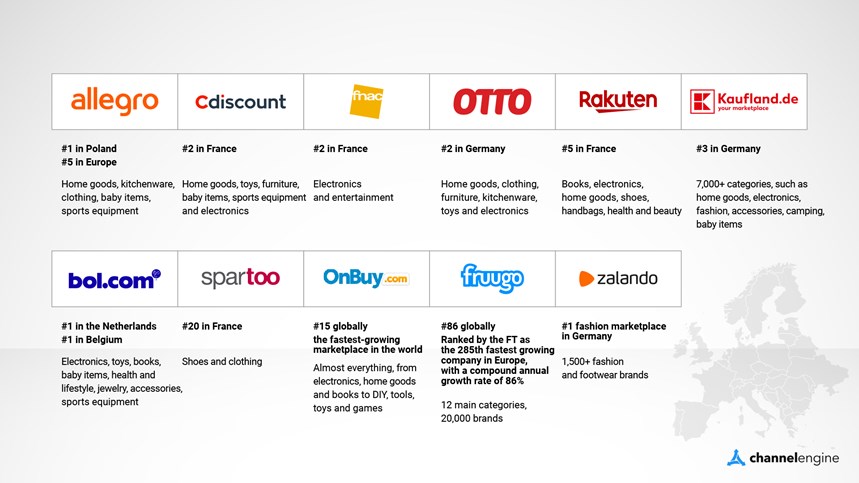Expanding international sales is a key strategy for growth, and marketplaces help retailers achieve this. However, smaller local marketplaces often go unnoticed despite offering unique opportunities to reach new markets and customers. In this article, Niels Floors, Head of Partnerships & Sales at ChannelEngine uncovers the hidden growth possibilities from selling via local online marketplaces.
Niels was also a speaker at Tamebay Live in May and you can watch his masterclass ‘Opportunities and listing on overseas marketplaces’ here.
Bigger isn’t always better
People love to go shopping in famous, iconic locations; NYC’s Fifth Avenue, London’s Oxford Street, or Paris’ Champs Elysées, to name a few. These places attract crowds of tourists who are actively looking to spend money in some of the most famous shopping locations in the world. But it isn’t necessarily where the locals shop; they might go for a look around, but locals tend to have their own places where they like to shop for good deals and unique items, such as small independent stores, outlet malls, and local markets – and they often shy away from the tourist traps altogether.
This pattern of behaviour is equally true for online shopping. While we tend to focus on the big-name online marketplaces such as eBay, Amazon, and Zalando, the local online marketplaces are the true heroes for a broad fan base of loyal consumers and retailers. These platforms have often developed as homegrown alternatives to Amazon and eBay, emerging before the international giants could expand into those countries.
In France, Amazon’s lead (by sales) over their nearest competitor is not as big as you would think.

Although the big-name marketplaces still hold a supreme position in many of these markets, the distance between them and the local marketplaces is not as big. Amazon and eBay hold the top two spots in the USA and have a significant leadership position.
In 2021, Amazon USA is predicted to have more than 5 times the market share of the nearest competitor, Walmart, and more than 9 times the share of eBay (the #3 e-commerce site).
In contrast, in France, 33% of shoppers rarely or never buy on Amazon at all. According to Favad (Fédération du e-commerce et de la vente à distance), while Amazon is still #1 in France, it only has 2 times the market share of their nearest competitor (Fnac) 70% of the top ten e-commerce sites are local ones.
In many cases, the local marketplaces have held their ground throughout Europe, maintaining their position despite stiff competition from the big names.
International expansion should be a part of the plan
For almost every retailer, international sales growth should be a part of the plan. Local marketplaces are a huge opportunity for retailers because they enable them to reach customers that would otherwise be unattainable – yet these rich veins are often overlooked to boost international expansion. It’s time to celebrate the value of local marketplaces and understand how they should be a part of your online retail growth strategy.
Maximum exposure on the biggest marketplaces isn’t always the best strategy
Although you should also be selling on the big-name marketplaces, it is much harder to stand out in these environments, so it should only be a part of your strategy. You can further expand sales by targeting local marketplaces too. These marketplaces have much more focused audiences, so it can be easier to target these groups more precisely and effectively.
Advantages of local marketplaces
They’re your hero, with valuable local knowledge.
The local marketplace is your local hero – they have already done most of the hard work by creating a shopping experience that works in the local environment. They have accumulated a wealth of knowledge and understanding about the shopping habits, preferred payment methods, and desires of their target groups to market themselves to those consumers more effectively.
Existing customer loyalty.
Local marketplaces also have existing pools of loyal customers, and these are primarily customers who frequently avoid shopping on the big-name marketplaces – so there is no other way to reach them.
Future expansion possibilities (Zalando was ‘local’ once).
The possibilities for future expansion should also not be ignored. As of now, Zalando is the most prominent fashion marketplace in Europe, but it initially started as a local marketplace in Germany.
If you are already successfully selling on these local marketplaces, you will have a head start if (or when) they go big and expand. If you want to know how to sell on Zalando successfully, find our tips & tricks here.
The best local marketplaces in Europe
There is a wealth of local marketplaces that provide ideal opportunities for reaching new customers. Some of these are growing very quickly, and others already have a substantial share of the online retail market.

How to get started – partner up for local knowledge
With so many possibilities and choices available, it can be hard to know where to start. Technical aspects like integration, content management, administration, and sales tax can seem daunting.
However, now it has become much easier to connect to marketplaces with a solutions provider that connects you to multiple marketplaces. These products work by integrating with your existing backend system. Each order is still handled in the same way as it is now, but it uses one inventory to sell through multiple channels.
Companies like ChannelEngine also offer a complete toolkit that handles content management, translation, taxes, and financial administration, while also delivering advanced pricing and repricing tools tailored to match each marketplace and country.
With a solution provider like this, you will clear a lot of the obstacles from your path to rapid sales expansion.



